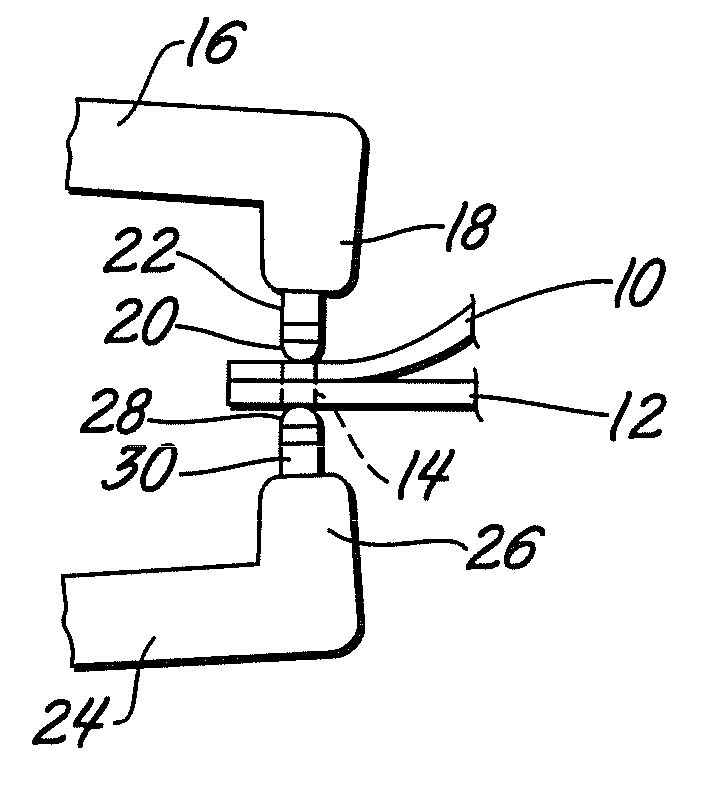Forming and re-forming welding electrodes with contoured faces
a welding electrode and contoured face technology, applied in the field of welding electrodes, can solve the problems of difficult welding, affecting the welding effect of the electrode tip or welding face, and similar welding challenges, and achieve the effects of improving mechanical stability, easy fowling of new electrodes, and good alignmen
- Summary
- Abstract
- Description
- Claims
- Application Information
AI Technical Summary
Benefits of technology
Problems solved by technology
Method used
Image
Examples
Embodiment Construction
[0021]A welding electrode cap (or welding face) design is provided that is useful for forming spot welds in metal workpieces. The welding electrode cap is useful in spot welding operations generally, and it offers advantages for welding light metal workpieces such as aluminum alloy and magnesium alloy sheet materials. These materials often have an oxide film on surfaces contacted by the aligned and opposing electrodes and it is preferred that the electrode faces be shaped to engage and pierce the oxide film during welding.
[0022]In the manufacture of automotive doors, deck lids, liftgates, and the like, for example, it is often the practice to form these parts of complementary inner and outer sheet metal panels. The panels are of complex curvature for overall design effect and to contain any necessary electrical wiring and / or hardware between them. The formed panels usually have flanges at their peripheral edges for joining. An inner panel is placed against an outer panel and the ass...
PUM
| Property | Measurement | Unit |
|---|---|---|
| heights | aaaaa | aaaaa |
| heights | aaaaa | aaaaa |
| heights | aaaaa | aaaaa |
Abstract
Description
Claims
Application Information
 Login to View More
Login to View More - R&D
- Intellectual Property
- Life Sciences
- Materials
- Tech Scout
- Unparalleled Data Quality
- Higher Quality Content
- 60% Fewer Hallucinations
Browse by: Latest US Patents, China's latest patents, Technical Efficacy Thesaurus, Application Domain, Technology Topic, Popular Technical Reports.
© 2025 PatSnap. All rights reserved.Legal|Privacy policy|Modern Slavery Act Transparency Statement|Sitemap|About US| Contact US: help@patsnap.com


